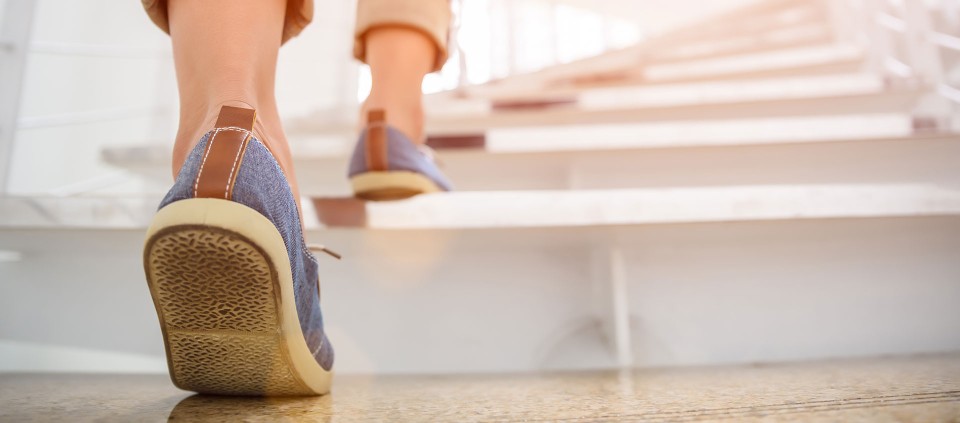Keep Things Moving: The Benefits of Informal Exercise

by Ellen Barrett and Kate Hanley
“The only valid excuse for not exercising is paralysis,” says Moira Nordholt, the founder of Feel Good Guru, and while it’s funny, it’s so true. We know you know that exercise increases the metabolic rate, helps circulation, improves blood-sugar regulation, and is one of the healthiest things you can do to find and maintain your ideal weight, prevent or manage PMS, and thrive all around. Your doctors have told you this. Your friends have told you this. Cosmopolitan magazine has told you this. You know already! What you may not know is that there are two kinds of exercise: formal and informal.
Formal exercise—the kind you do at the gym, which we’ll get to in a moment—is mandatory, but the informal kind, aka, “non-exercise activity,” is equally vital. We’re talkin’ taking the stairs, lifting the 20-pound bag of dog food into and out of your car, walking to the post office, taking the trash out to the curb. In other words, be like most mothers—“work out” even when you’re not working out. You should be “up and at ’em” during Phase II; active in general, not just during your workout.
Our ancestors, distant and not-so-distant, were masters of non-exercise activity. Their bodies were in constant motion. They didn’t do aerobics or take tennis lessons. They shucked corn, churned butter, and walked for miles and miles, carrying water on their heads. From prehistoric times right up to the mid-twentieth century, our ancestors were in motion from sunup to sundown. Of course, sometimes the amount of “toil” was too much and not ideal in terms of wellness, but the point is that they were active.
The human body is engineered to move, not to sit still, and definitely not to hunch over a desk for eight hours a day. This is one of many reasons why modern life is not natural, for men and women alike. Ellen tells a story of when she went to replace her garage door. She requested a manual one, the kind you have to bend down, engage your abs, and pull open yourself. No electricity, no codes. Her goal was to just keep things simple. The garage door salesman said no one had asked for a manual door in “forever,” and didn’t have one to sell her. Just think: With a door that you have to open yourself, you sneak in some activity every time you need to get into your garage, and even that action has disappeared for most of America. We push a button instead of using brawn.
We want you to find ways of using the proverbial manual garage door. Maybe it’s by riding your bike to work and leaving your car at home. Maybe it’s by getting on your hands and knees and scrubbing the kitchen floor yourself instead of paying someone to do it. Maybe it’s by replacing your desk chair with an exercise ball, or by organizing a walking meeting, instead of a “slouching” meeting over the phone.
A 2004 study published in Medicine and Science in Sports and Exercise showed the variation between 200 men and women in regards to steps taken per day. The men in the survey took an average of 7,192 steps each day, while the women in the survey took an average of 5,210 steps. This upsets us so much. First, we “lost” to the boys. (Joke). And second, according to a lifestyle index, 5,000 to 7,499 steps per day is considered low activity, so 5,210 is “unacceptable,” says Ellen!
Exercise, in all its forms, promotes circulation, and circulation (remember, it’s one of our two themes in Phase II) keeps things percolating—energizing your thyroid, your reproductive organs, and your metabolism. Your lymphatic system works directly with your cardiovascular system to keep blood and lymphatic fluid moving and flushing toxins out of the body. The lymphatic system also carries immune cells throughout the body to help defend against infections. But your lymphatic system doesn’t have a pump the way the circulatory system has the heart. The only way to move lymph is to move.
Find out about upcoming programs with Ellen Barrett at Kripalu.
Excerpted with permission from The 28 Days Lighter Diet, © 2014 by Ellen Barrett and Kate Hanley.